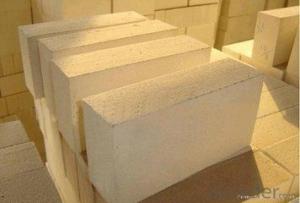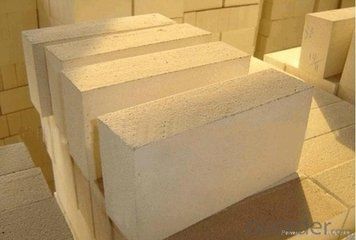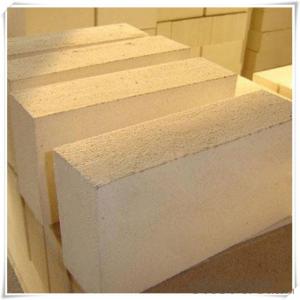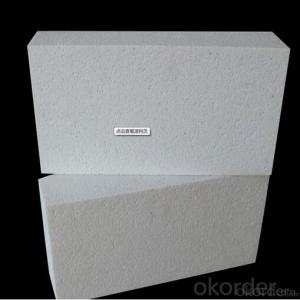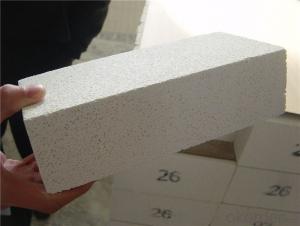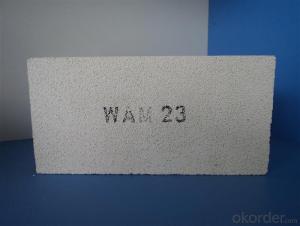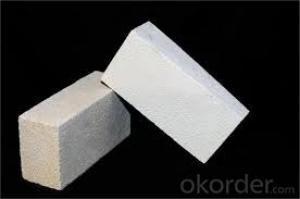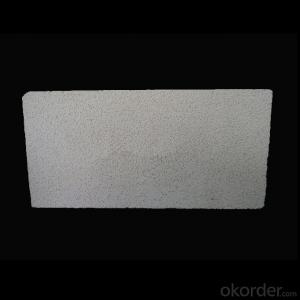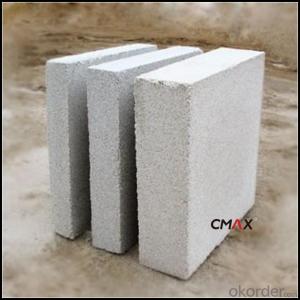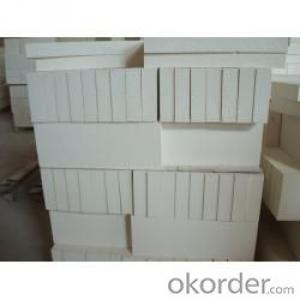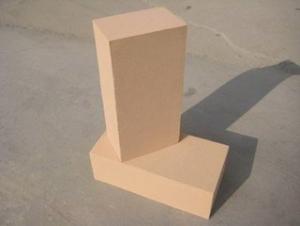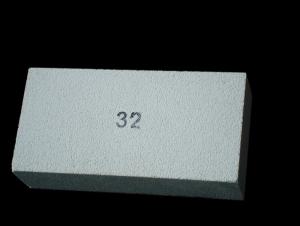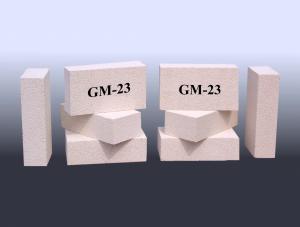High Quality Insulating Fire Brick
- Loading Port:
- China Main Port
- Payment Terms:
- TT OR LC
- Min Order Qty:
- -
- Supply Capability:
- -
OKorder Service Pledge
OKorder Financial Service
You Might Also Like
Thermal insulation brick is introduced
A, fully replace aluminous model board, honeycomb panel, curtain wall, such as common decoration materials, multi-functional integration, a construction can solve the heat preservation decoration two functional requirements,
level off is smooth and beautiful adornment sex is strong.
2, high strength, good rigidity, light seismic and wind resistance, creep, superior performance,
reduce building load and more economic and durable.
Three fire retardant, heat preservation and heat insulation, sound insulation, heat insulation, anti-cracking waterproof, according to 65% of building energy efficiency requirements for construction design.
Four Jin Anhua, easy installation and finishing products, process, shorten the construction period and quality easy to control.
Five, don't use aluminum, steel, keel support, set in the installation, reduce the gap between the insulation
board and wall body.Increased security system.
Six, no radiation, green environmental protection, can be widely used in all kinds of public buildings and home interior decoration.
Seven, installed with cement, save a lot of material, manpower and time.Reduce the air pollution caused by
production cement burning, accord with the requirement of green low carbon environmental protection.
Eight, more than 70 carrier lifetime, more than 20 years of decoration life for a long time, to adapt to a variety
of areas such as zha climate and complex environment.With the quality of class international aluminous model board,
aluminum veneer and steel hanging stone, compared to reduce bearing 30% to 90%
Nine, double efficacy, shorten time li
- Q: What are the different types of insulating fire bricks available?
- There are various types of insulating fire bricks available, each possessing unique characteristics and applications. Some of the most common types are: 1. Lightweight Insulating Fire Bricks (IFBs): These bricks consist of lightweight materials, such as expanded clay, perlite, or vermiculite, blended with a binder to create a porous structure. They offer exceptional insulation properties and find wide usage in applications where maintaining high temperatures is crucial, like in kilns or furnaces. 2. Mullite Insulating Fire Bricks: Mullite bricks are composed of a combination of alumina and silica, resulting in a material resistant to high temperatures. These bricks exhibit excellent thermal shock resistance and are frequently utilized in applications involving rapid heating and cooling cycles, such as in glass manufacturing or incinerators. 3. Alumina Insulating Fire Bricks: As the name suggests, these bricks are primarily made from alumina, which is highly resistant to high temperatures. They possess excellent thermal conductivity and are commonly employed in industries where maintaining high temperatures is essential, such as the iron and steel industry or ceramics production. 4. Silica Insulating Fire Bricks: Silica bricks are mainly composed of silica, a heat-resistant material. They exhibit exceptional thermal insulation properties and are commonly used in applications where maintaining high temperatures is necessary, like in the construction of kilns or furnaces. 5. Calcium Silicate Insulating Fire Bricks: These bricks are created by combining calcium silicate with other insulating materials. They possess excellent thermal insulation properties and are often employed in industries where maintaining high temperatures is crucial, such as the petrochemical industry or power plants. Ultimately, the choice of insulating fire brick depends on the specific requirements of the application, including temperature resistance, thermal conductivity, and thermal shock resistance. It is vital to select the appropriate type of insulating fire brick to ensure optimal performance and safety.
- Q: Are insulating fire bricks resistant to moisture or water damage?
- Insulating fire bricks are generally resistant to moisture or water damage. These bricks are designed to have low porosity and high density, which helps prevent water absorption. Additionally, they are typically made from materials like alumina or silica, which have inherent resistance to moisture. However, it is important to note that no material is completely impervious to water, and prolonged exposure to moisture or water can still have some effect on the insulating fire bricks over time. Therefore, it is recommended to take necessary precautions, such as applying appropriate sealants or coatings, to enhance their resistance to moisture or water damage in certain applications.
- Q: Difference between inorganic insulation material and organic thermal insulation material
- Manufacturing distinction:1, organic insulation materials mainly from petroleum products, including foam polystyrene board (EPS), extruded polystyrene board (XPS), spray polyurethane (SPU) and polystyrene particles. From a nationwide perspective, the organic exterior wall insulation system occupies more than 75% of the current external thermal insulation Market in our country.2, inorganic heat preservation material including expanded perlite, hollow glass beads, rock wool, mineral wool, perlite, glass wool and lightweight block self insulation system, mainly based on inorganic materials such as stone, glass, industrial waste and so on. As the state attaches importance to and requirements of the fire protection safety standards for wall materials, the market share of inorganic thermal insulation materials will be greatly improved.
- Q: Are insulating fire bricks resistant to thermal stress?
- Yes, insulating fire bricks are designed to be highly resistant to thermal stress. They can withstand high temperatures without cracking or breaking, making them ideal for applications where thermal insulation and durability are required.
- Q: Can insulating fire bricks be used in the construction of steel production furnaces?
- Certainly, insulating fire bricks have the capability to be employed in the construction of steel production furnaces. These bricks have been specifically engineered to endure extreme temperatures and offer exceptional thermal insulation, rendering them suitable for a wide range of industrial applications, including steel production. They are manufactured using lightweight materials with low thermal conductivity, enabling them to effectively minimize heat loss and enhance energy efficiency within furnaces. Furthermore, these bricks exhibit remarkable resistance to thermal shock, a crucial property for steel production processes involving rapid heating and cooling. In summary, utilizing insulating fire bricks in the construction of steel production furnaces can optimize performance, reduce energy consumption, and enhance the overall efficiency of the steelmaking process.
- Q: How do insulating fire bricks affect the overall thermal stability of a structure?
- Insulating fire bricks enhance the overall thermal stability of a structure as they have low thermal conductivity, preventing heat transfer and minimizing energy loss. By acting as a barrier, these bricks help in maintaining a consistent temperature within the structure, reducing the impact of external temperature fluctuations. This enhanced thermal stability promotes energy efficiency, cost savings, and a more comfortable environment within the structure.
- Q: Can insulating fire bricks be used as a backup insulation material?
- Indeed, insulating fire bricks can serve as an alternative insulation material. These bricks are specifically engineered to possess a low thermal conductivity, enabling them to effectively reduce the transfer of heat. Consequently, they are well-suited for deployment as backup insulation in situations where maintaining temperature stability is of utmost importance. Their usage in industrial furnaces, kilns, and other environments characterized by high temperatures is quite common, particularly when the primary insulation material is prone to failure or necessitates additional reinforcement. By providing an additional layer of insulation, insulating fire bricks contribute to the prevention of heat loss and the enhancement of energy efficiency. Moreover, their durability and ability to withstand high temperatures establish them as a dependable choice for backup insulation.
- Q: Can insulating fire bricks be used as a thermal barrier?
- Yes, insulating fire bricks can be used as a thermal barrier. Insulating fire bricks are specifically designed to have low thermal conductivity, meaning they are able to effectively reduce heat transfer. This makes them an excellent choice for thermal insulation applications. They are commonly used in industries where high temperatures are involved, such as in furnaces, kilns, and other heat-intensive processes. Insulating fire bricks can help to minimize heat loss, maintain consistent temperatures, and improve energy efficiency. Additionally, their lightweight nature makes them easy to handle and install, further enhancing their suitability as a thermal barrier.
- Q: Can insulating fire bricks be used for fireplace lining?
- Indeed, fireplace lining can be achieved using insulating fire bricks. These bricks are specially engineered to endure high temperatures and offer exceptional insulation. With their low thermal conductivity, they excel at retaining heat and preventing excessive heat loss from the fireplace. Consequently, they are an ideal choice for lining fireplaces as they augment the efficiency and efficacy of the heating system. Moreover, insulating fire bricks exhibit resistance to thermal shock and can withstand rapid temperature fluctuations, a crucial attribute in fireplaces where temperatures can vary significantly. All in all, incorporating insulating fire bricks for fireplace lining can enhance the performance and energy efficiency of the fireplace while ensuring its safety and durability.
- Q: Can insulating fire bricks be used for insulation in petrochemical plants?
- Yes, insulating fire bricks can be used for insulation in petrochemical plants. Insulating fire bricks are known for their excellent thermal properties, including low thermal conductivity and high resistance to heat transfer. These properties make them suitable for use in high-temperature environments such as petrochemical plants, where insulation is crucial to prevent heat loss and maintain optimal operating conditions. Additionally, insulating fire bricks are lightweight and have good mechanical strength, making them easy to install and durable in industrial settings. They are also resistant to chemical corrosion, which is essential for petrochemical plants that handle various corrosive substances. Therefore, insulating fire bricks can effectively provide insulation and contribute to energy efficiency and safety in petrochemical plants.
Send your message to us
High Quality Insulating Fire Brick
- Loading Port:
- China Main Port
- Payment Terms:
- TT OR LC
- Min Order Qty:
- -
- Supply Capability:
- -
OKorder Service Pledge
OKorder Financial Service
Similar products
Hot products
Hot Searches
Related keywords
